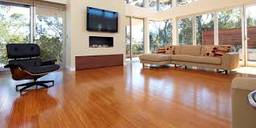Maintaining your Timber Floor

Timber Flooring
Maintaining a wooden floor requires regular care and attention to preserve its appearance and durability. Here's a guide on how to maintain a wooden floor effectively:
-
Regular Cleaning:
- Sweep or vacuum the floor regularly to remove dust, dirt, and debris. Use a soft-bristled broom or a vacuum cleaner with a brush attachment to prevent scratching.
- Use a damp mop with a mild wood floor cleaner to clean the surface periodically. Avoid using excessive water, as it can damage the wood. Wipe up any spills immediately to prevent staining.
-
Preventative Measures:
- Place doormats at entrances to prevent dirt and grit from being tracked onto the floor.
- Use furniture pads or felt protectors on the legs of furniture to prevent scratches and dents.
- Avoid wearing high heels or shoes with sharp edges on wooden floors, as they can cause damage.
-
Avoid Moisture:
- Wood is susceptible to moisture damage, so avoid wet mopping or using excessive water on the floor.
- Maintain indoor humidity levels between 35% and 55% to prevent the wood from expanding or contracting excessively, which can lead to warping or cracking.
-
Protective Coatings:
- Apply a protective finish such as polyurethane, varnish, or wax to the floor surface to provide a barrier against wear and tear.
- Follow the manufacturer's recommendations for application and reapplication of the finish to maintain the floor's protection.
-
Regular Inspection:
- Inspect the floor regularly for signs of wear, damage, or moisture issues. Address any problems promptly to prevent further damage.
-
Refinishing:
- Over time, wooden floors may require refinishing to restore their appearance and protection. This involves sanding down the surface and applying a new finish.
- The frequency of refinishing depends on the amount of foot traffic and wear the floor receives. Generally, it's recommended every 3-5 years for most floors, but this can vary.
-
Gentle Cleaning Solutions:
- When using cleaning solutions, opt for products specifically designed for wood floors. Avoid harsh chemicals or abrasive cleaners, as they can damage the finish and wood.
- Alternatively, you can make your own gentle cleaning solution by mixing water with a small amount of mild dish soap or vinegar.
-
Regular Maintenance:
- Stay proactive with maintenance, addressing any issues promptly to prevent them from worsening. This includes repairing scratches, dents, or loose boards as needed.
As for the hardest-wearing floor type, engineered hardwood floors are often considered one of the most durable options. They consist of multiple layers of wood bonded together, making them more resistant to moisture and temperature changes compared to solid hardwood floors. Additionally, they can be sanded and refinished multiple times, extending their lifespan. However, the hardness and durability of any floor depend on factors such as the wood species, finish, and maintenance routine.
